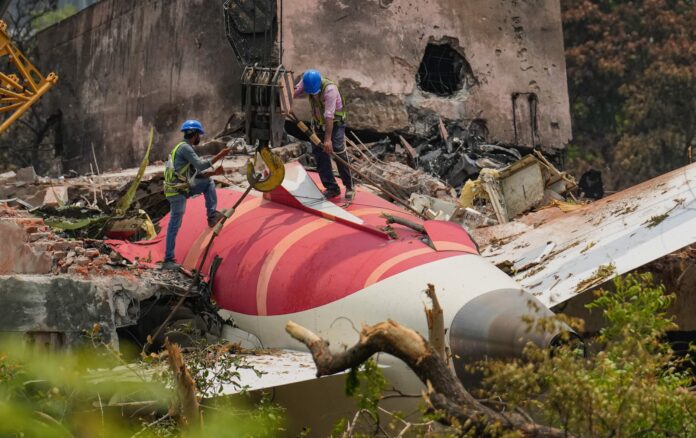The recently released preliminary crash report on Air India Flight AI171 has ignited a strong response from international media, with leading outlets in the United Kingdom, the United States, and around the world closely examining its findings. The report, which outlines a possible accidental fuel supply shutdown prior to the fatal incident, has raised serious questions about aircraft safety systems, cockpit operations, and procedural lapses.

US Media: Technical Lapses and “Rare Occurrence”
American media outlets have responded with detailed analysis and cautious skepticism. CNN described the shutdown of the fuel supply system mid-flight as an “extremely rare scenario,” citing aviation experts who expressed concern over how such a critical system could have been accidentally deactivated. The report also discussed possible software interference, particularly from systems like the Thrust Control Malfunction Accommodation, which may have responded unpredictably.
The Washington Post highlighted the absence of conclusive evidence pointing to sabotage or external technical failure but noted that such incidents could take more than a year to reach a final conclusion. Emphasis was placed on the need for a deeper review of flight data recorders and cockpit communication in the final moments of the flight.
UK Media: Crew Responsibility and Policy Concerns
British media outlets responded with sharper tones and public-facing narratives. The BBC underlined the report’s finding that the aircraft’s fuel system had been “manually shut off” before the crash, describing the event as deeply concerning though still under investigation. It acknowledged that the report did not assign blame but called for enhanced safety measures in Indian aviation.
The Telegraph focused on a revealing moment captured in cockpit recordings, where one of the pilots is heard asking why the fuel had been cut off. The newspaper labeled it a chilling and pivotal exchange that suggests potential crew error or miscommunication.
Metro, a UK tabloid, questioned whether the incident could be attributed to negligence on part of the flight crew, framing its coverage around the accountability of those in the cockpit. Meanwhile, The Independent raised concerns about the transparency and pace of the investigation, particularly with respect to how families of British nationals on board were informed and supported in the aftermath.
In the political realm, Prime Minister Keir Starmer called the crash “deeply distressing” and assured the public of full cooperation with Indian authorities through the British High Commission. King Charles was also formally briefed on the incident, reflecting the high-level attention the crash has received in the UK.
Global Media: Investigative Gaps and Safety Reflections
The New York Times and other international publications echoed the need for a rigorous and transparent investigation. Many focused on procedural shortcomings, training gaps, and the broader implications for India’s aviation oversight mechanisms. Aviation safety commentators noted that while Indian airlines have expanded rapidly, the systems for quality control, training, and maintenance need strengthening to match international benchmarks.
Outlets also pointed to the critical role of technology in modern cockpits and how automation, while generally reliable, can sometimes lead to over-dependence or confusion during emergencies.
Broader Implications
The preliminary crash report has not only sparked international concern but also reignited debate over aviation safety standards in India. With Air India under renewed scrutiny, and the Directorate General of Civil Aviation (DGCA) preparing for international audits, the incident is expected to influence policy changes, crew training norms, and potentially aircraft certification processes going forward.
The AI171 crash serves as a tragic reminder of the importance of constant vigilance, system integrity, and human factors in aviation safety — and the world will be watching how India responds in the coming months.




